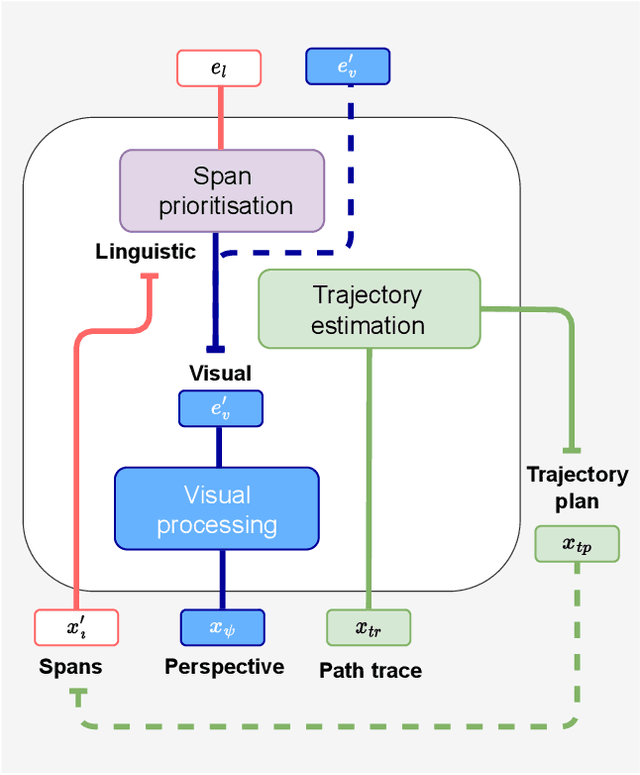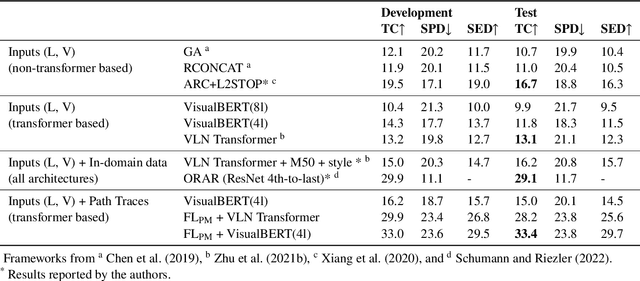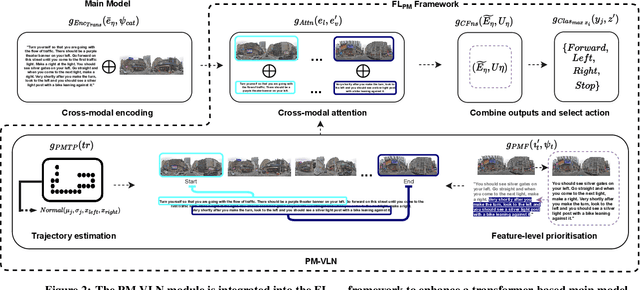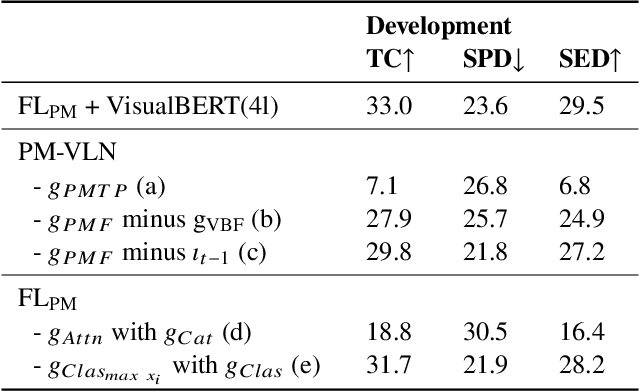A Priority Map for Vision-and-Language Navigation with Trajectory Plans and Feature-Location Cues
Paper and Code
Jul 24, 2022



In a busy city street, a pedestrian surrounded by distractions can pick out a single sign if it is relevant to their route. Artificial agents in outdoor Vision-and-Language Navigation (VLN) are also confronted with detecting supervisory signal on environment features and location in inputs. To boost the prominence of relevant features in transformer-based architectures without costly preprocessing and pretraining, we take inspiration from priority maps - a mechanism described in neuropsychological studies. We implement a novel priority map module and pretrain on auxiliary tasks using low-sample datasets with high-level representations of routes and environment-related references to urban features. A hierarchical process of trajectory planning - with subsequent parameterised visual boost filtering on visual inputs and prediction of corresponding textual spans - addresses the core challenges of cross-modal alignment and feature-level localisation. The priority map module is integrated into a feature-location framework that doubles the task completion rates of standalone transformers and attains state-of-the-art performance on the Touchdown benchmark for VLN. Code and data are referenced in Appendix C.
 Add to Chrome
Add to Chrome Add to Firefox
Add to Firefox Add to Edge
Add to Edge